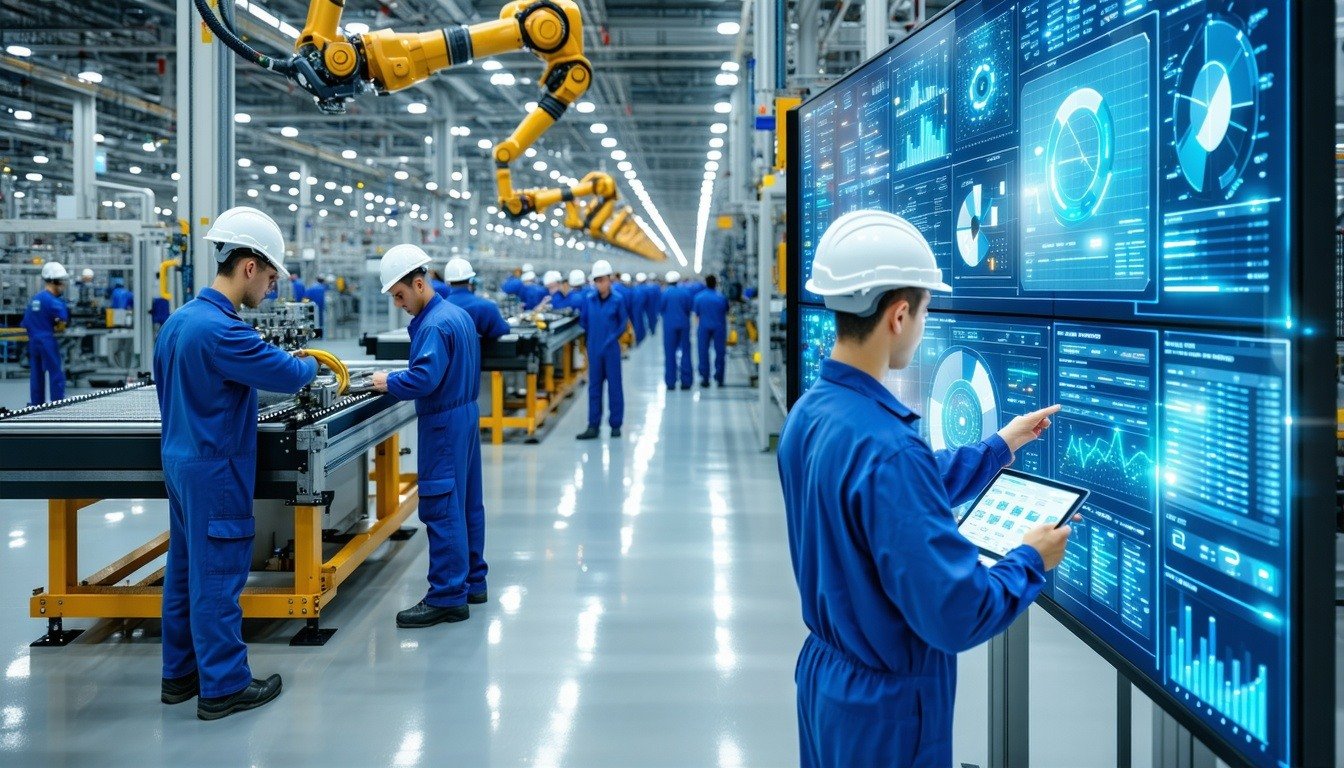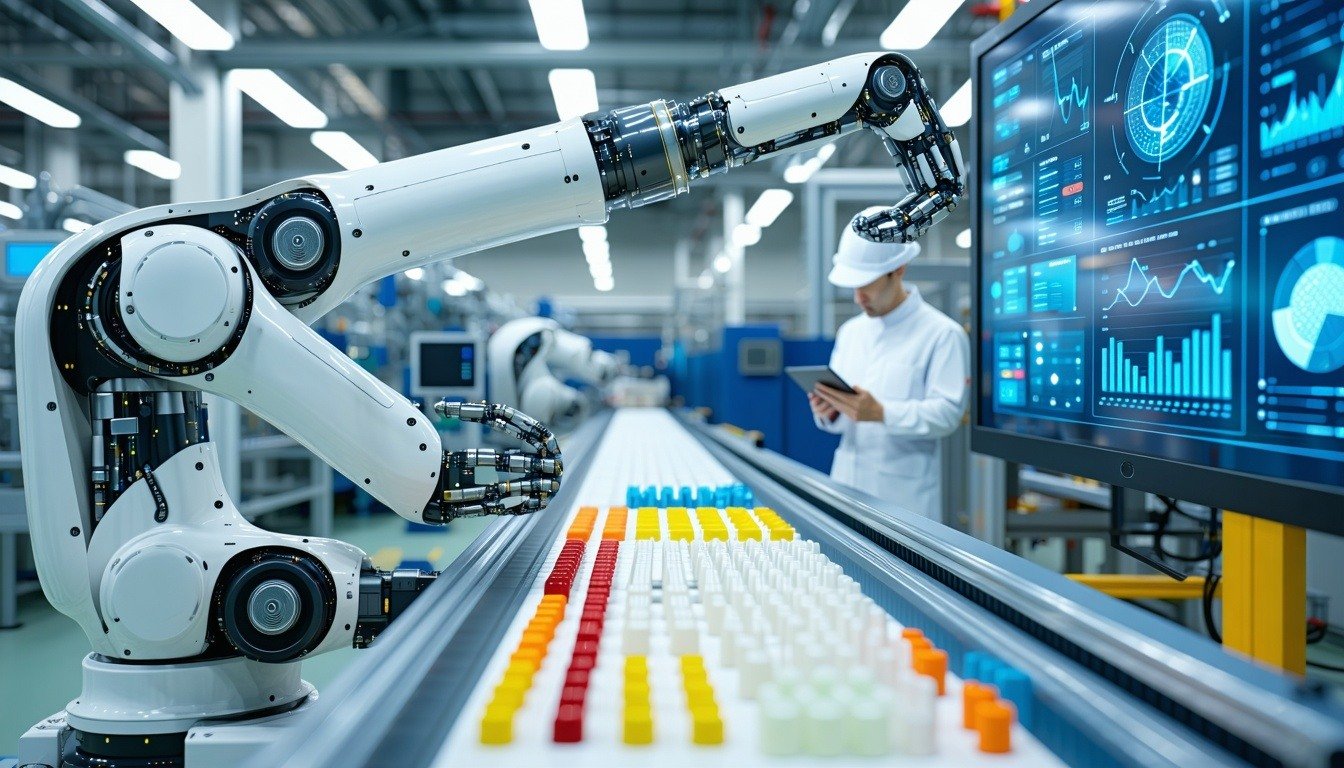Digitalization in manufacturing is redefining operational efficiency and resilience, yet it’s not always so clear how digitally transformed manufacturers are. To get a better understanding of how technologically advanced manufacturers are, to date, ABI Research conducted the second edition of its Manufacturers’ Technology Adoption & Attitudes Survey, published in March 2025. It draws insights from 458 decision-makers across the United States, Germany, and Malaysia. The six revelations shared in this blog highlight key trends and challenges shaping manufacturing digitalization, offering strategic guidance for industry leaders and technology vendors.
What Is Digitalization in Manufacturing?
Digitalization in manufacturing refers to the integration of digital technologies across production processes to enhance efficiency, visibility, and decision-making. It involves capturing, analyzing, and acting on data from equipment, systems, and supply chains in real time. This shift is critical for manufacturers aiming to stay competitive in an increasingly complex and fast-moving global market. The benefits of digitalization include improved operational performance, reduced downtime, enhanced product quality, and greater agility to respond to demand fluctuations. Technologies enabling this transformation include Industrial Internet of Things (IIoT) sensors, cloud-based data platforms, digital twins, and advanced analytics. Together, these tools allow manufacturers to move from reactive operations to predictive and even autonomous systems, supporting smarter, more resilient factories.
Next, we share six ways manufacturing digitalization is progressing based on ABI Research’s survey of manufacturing decision-makers.
1. Digital Maturity Advances Unevenly Across Facilities
The pace at which manufacturers are digitalizing differs starkly by facility type. The verdict is clear: greenfield production facilities are far more technologically advanced than brownfield sites. Our survey shows that 13% of greenfield sites are digitally transformed, up from 1.1% in Wave 1 of the survey, indicating steady progress in new infrastructure. Moreover, about 3 in 4 greenfield manufacturing plants are at least a modern factory.
The same cannot be said for brownfield facilities, with 51% of sites remaining at the early automation stage. Meanwhile, just 49% of facilities have reached modern factory status. The discrepancy between greenfield and brownfield sites reveals that retrofitting legacy plants poses a persistent barrier, emphasizing the need for customized approaches to building a connected factory.
2. Cybersecurity Anchors Productivity Investments
Cybersecurity has rapidly emerged as a top investment area for productivity, with 63.5% of manufacturers prioritizing it as an investment in Wave 2. This is a nearly three-fold increase from 21.9% in Wave 1.
After the major cyberattack on CrowdStrike, fears of data loss and order disruptions highlight the crucial role of network security for operational continuity. As the digitalization of manufacturing increases reliance on connected systems, this shift signals a pressing demand for secure infrastructure, requiring tech providers to deliver robust protections.

3. Private 5G Emerges as a Digital Enabler
Private 5G is gaining momentum as a foundation for manufacturing digitalization. Advanced networks are proving essential to support mission-critical applications like robotics, asset tracking, and industrial software systems. Our survey results indicate that 43% of manufacturers are either devising an implementation plan for 5G or have already rolled it out.
Germany leads the way with 34% of respondents in the initial 5G rollout, surpassing the 27% adoption rate for U.S. and Malaysian firms. 5G’s security and reliability advantages over 4G are the top drivers for its adoption in the manufacturing sector.
An interesting factoid revealed in the survey was the difference between what Malaysia-based firms like about 5G and what U.S.-based firms like about it. While Malaysian manufacturers prioritize connectivity benefits, the United States is more focused on efficiency gains.
4. Generative AI Enhances Production Precision
Generative Artificial Intelligence (Gen AI) is a cornerstone in manufacturing digitalization, particularly for improving production lines. Some of the top use cases reported by survey respondents include root cause analysis, creating a new assembly/production line, generating work instructions more quickly, and equipment scheduling. By optimizing workflows, Gen AI demonstrates how digitalization in manufacturing leverages data-driven intelligence to refine production beyond traditional methodologies.
While those are some of the top Gen AI use cases cited by manufacturers, regional differences persist. For example, 79% of German manufacturers believe Gen AI can help create work instructions, compared to 76% of Malaysian firms and just 62% of U.S. firms.

5. Human and Process Barriers Impede Adoption
Despite huge technological leaps in recent years, manufacturing digitalization faces significant hurdles. Among the top people challenges, respondents identify a lack of expertise, insufficient planning time, and unskilled staff as key hindrances to digital transformation.
There are also several process challenges that manufacturers must address, including unclear Return on Investment (ROI), an inability to articulate their technology needs, and a struggle to align technology investments with commercial objectives.
These findings reveal that digitalizing manufacturing requires more than tools—it demands workforce training, talent acquisition, and strategic clarity to bridge gaps and drive adoption.
6. Single Cloud Solutions Gain Preference
Cloud computing preferences offer another lens on digitalization in manufacturing, with single-cloud solutions favored over dual-cloud setups across regions. The consistent gap between single- and dual-cloud adoption reflects a strategic choice for simplicity and security in managing digital operations. Manufacturers value cloud benefits like advanced security and scalability, aligning with the broader push to integrate digital systems efficiently into production environments. Moreover, multi-cloud deployments come with a host of cybersecurity functionality challenges.
Strategic Implications for Industry Leaders
Wave 2 of ABI Research’s survey paints a manufacturing sector surely advancing toward digitalization. Through the deployment of 5G, Gen AI, cloud computing, and an ironclad cybersecurity strategy, manufacturers are one step closer to creating the connected factories required to meet customer demands and optimize operations. However, some challenges persist, such as modernizing legacy facilities, a lack of education about certain technologies, and skill shortages.
The revelations identified in this blog underscore the necessity of holistic strategies that address both technology and human factors. While technologies facilitate automation and generate crucial insights into operations, humans must manage them and ultimately make final decisions.
Industry leaders can better pinpoint where manufacturers are in their digitalization journey by reading the full survey findings.




